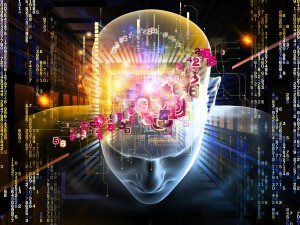The Internet of Things, or the ability of all physical objects to transfer data to the internet and communicate with one another without direct interaction, is a phenomenon that is quickly branching out in its development. Currently, IoT has been used frequently in cars, but now a new host is being tested. In Wales, researchers have turned to sheep as wearers of these IoT devices to discover information about rural environments. For instance, by the movements of the flock one may be able to tell whether there has been flooding in an area or agricultural pollution in another.
 A scientific project that has been experiencing many breakthroughs in a similar fashion to IoT is artificial intelligence, or AI. This form of technology is the ability of computer systems to mimic human behaviors. These machines can perform various tasks like recognizing speech and translating languages to making correct visual perceptions and decisions. Last summer, one device made amazing strides and passed the Turing Test, which means that it was able to exhibit behavior indistinguishable from that of a human. Some people, however, are afraid of what these machines may be able to accomplish. Our greatest danger is building programs that we don’t fully understand and that the machines will somehow gain control over the world. Elon Musk, the inventor of paypal, tesla, and SpaceX, stated that AI is our biggest existential threat. Although these threats do exist, if we closely monitor the development of AI we can use these advancements to our advantage (see video at the end of the article). These machines may be able to change various aspects of our daily lives for the better and the future of this technology looks bright.
A scientific project that has been experiencing many breakthroughs in a similar fashion to IoT is artificial intelligence, or AI. This form of technology is the ability of computer systems to mimic human behaviors. These machines can perform various tasks like recognizing speech and translating languages to making correct visual perceptions and decisions. Last summer, one device made amazing strides and passed the Turing Test, which means that it was able to exhibit behavior indistinguishable from that of a human. Some people, however, are afraid of what these machines may be able to accomplish. Our greatest danger is building programs that we don’t fully understand and that the machines will somehow gain control over the world. Elon Musk, the inventor of paypal, tesla, and SpaceX, stated that AI is our biggest existential threat. Although these threats do exist, if we closely monitor the development of AI we can use these advancements to our advantage (see video at the end of the article). These machines may be able to change various aspects of our daily lives for the better and the future of this technology looks bright.